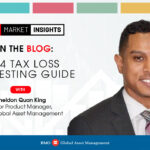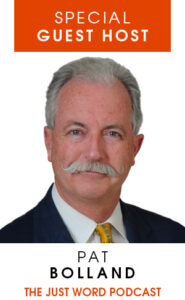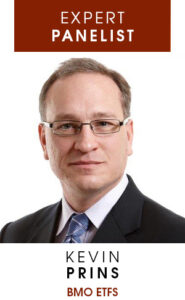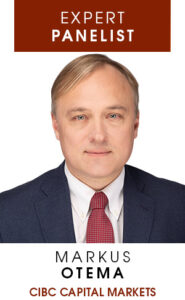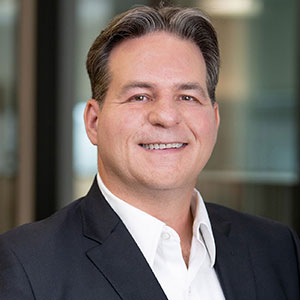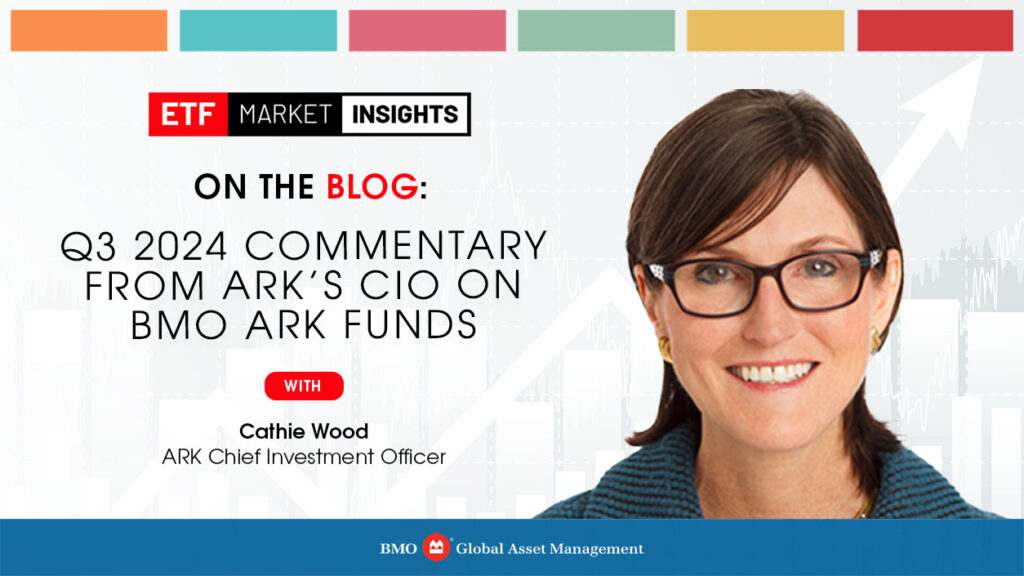
Broad-based global equity indexes1 appreciated in the third quarter as markets anticipated and reacted to a shift in the U.S. Federal Reserve’s (Fed) policy, beginning with a 50 basis point2 cut in September. While the consensus forecast is for a soft landing, ARK still expects that a loss of pricing power will force corporations into employment cutbacks, perpetuating the rolling recession3 that began in the spring of 2022 when the Fed started hiking interest rates by 22-fold in little more than a year’s time. In response, housing, autos, commercial real estate, and capital spending have capitulated, while inventories continue to build and small business optimism, as measured by the National Federation of Independent Business (NFIB), hovered at lows not seen since the 2008-09 global financial crisis (GFC). In our view, the Five Innovation Platforms4 around which ARK has centered its research and investing could play an outsized role in pulling the economy out of this rolling recession, salvaging corporate margins as inflation gives way to deflation in many sectors during the next few years.
Signaling recession in July, the employment report triggered the Sahm Rule5, as the three-month moving average of the U.S. unemployment rate rose 50 basis points above its lowest point in the last 12 months, historically an indicator that the economy has been in recession for three months. Underscoring labour market weakness, for the twelve months ended March 2024, the U.S. Bureau of Labor Statistics revised employment down by 818,000, the largest downward revision since 2009, taking the average growth in monthly payrolls down from 242,000 to 174,000 jobs per month. Moreover, after a surge during the post-COVID “Great Resignation”, quit rates have reversed sharply, taking the year-over-year growth in wages for job changers down from 16% to 7%.
ARK’s research suggests that the economy has been undergoing rolling recessions. Supporting that point of view are the following indicators:
- The auto industry faced significant challenges during the COVID-19 pandemic and, while sales did enter a V-shaped recovery in 2021, current unit sales are annualizing at a 15.8 million6 rate, well below the pre-COVID range of 17-18 million units. In the early days of the pandemic, autos accounted for roughly one-third of the inflation spike. Now, used car prices are down 5% on a year-over-year basis and have dropped 21% below peak prices.7
- Housing metrics like median prices, housing starts, and affordability also are sending troubling signals. At 3.9 million units, the number of existing home sales is not far above levels last seen during the global housing crisis.8 At the same time, the historically high number of apartment units currently under construction suggests that rents will push inflation into much lower-than-expected territory during the next year.
- Many global company bellwethers have corroborated the weakness in economic activity, reporting declines in revenues on a year-over-year basis in their most recent quarters. Notably, against “easy” comparisons a year ago, the revenue declines at 3M (-0.4%), UPS (-1.1%), Dow (-4.4%), Thermo Fisher (-1.4%), Texas Instruments (-15.6%), and FedEx (-0.5%) have surprised on the low side of expectations. Other bellwethers like Kraft-Heinz (-3.6%), Cisco (-10.3%), Caterpillar (-3.6%), and Procter & Gamble (-0.1%) also have reported year-over-year revenue declines, underscoring the widespread weakness in economic activity.
- After boosting profitability with higher prices during the supply-chain-related bottlenecks in 2021-22, and again as unit growth disappointed in 2023, corporations now seem to be losing pricing power, to the detriment of profit margins. Already, companies like Amazon, Nike, Starbucks, and McDonald’s have launched discount campaigns to win back consumers. As measured by Bloomberg, the S&P 500’s gross margin declined from 34.5% on average during the past five years to 33.4% during the third quarter of 2024. In our view, this setback will intensify until the Fed cuts interest rates significantly and/or companies harness innovation like artificial intelligence aggressively, not only to drive productivity growth but also to create new products and services that replace legacy solutions. To limit the damage to margins in the interim, companies that hoarded employees during post-COVID labor shortages are likely to lay them off during the next year, further allaying the Fed’s concern about underlying inflation. As a result, nominal activity could weaken beyond the recent soft spots associated with housing, autos, and other big-ticket purchases, forcing more price cuts and margin compression.
- As measured by the U.S. NFIB, Small Business Optimism in the US is in recession territory, lower not only than that seen during the COVID recession and the saving and loans crisis, but also at level experienced during the GFC. 9 Small businesses are the primary drivers of job creation, so plummeting confidence suggests that the labor market could be much weaker than headline figures suggest.
- M210 growth turned negative on a year-over-year basis from December 2022 through March 2024 and, at 2.0%, is still weak by historical standards. Should the correlation between the Consumer Price Index11 (CPI) and 18-month leading M2 growth hold steady, CPI could turn negative next year, as it did in 2014, 2015, and 2020.
- The ratio of the Commodity Research Bureau (CRB) Metals price index to the Gold price index has dropped below its lows during the GFC in 2008-2009 and the COVID crisis. Until the Fed started raising rates in 2022, this ratio had been correlated closely with long-term interest rates. If this relationship were to revert to normal, interest rates could collapse, or metals prices could rise significantly, or some combination of both. Thus far, interest rates seem to be holding sway.
- Current high yield spreads12 are remarkably narrow compared to long-term averages, indicating that credit markets do not perceive credit or deflationary risks. Perhaps abundant liquidity is chasing yield and distorting those spreads, masking underlying risks that would be more apparent otherwise.
While the Fed was focused on squelching inflation with higher interest rates, the bond market was signaling trouble ahead. From March 2021 to July 2023, the yield curve13 inverted from +159 basis points to -108 basis points,14 hitting the steepest levels of inversion since the early 1980s when the Fed was fighting double-digit inflation. Since July 2023, the yield curve has entered a bear steepening phase, with long-term rates increasing relative to short-term rates, eliminating the inversion while suggesting that both real growth and inflation could surprise on the low side of expectations. The Federal Reserve began increasing interest rates when year-over-year inflation in the CPI—a lagging economic indicator—reached 8.5% in March 2022. Shortly thereafter, geopolitical pressures and inventory hoarding pushed the CPI-based inflation rate to 9.1% on a year-over-year basis. Since then, CPI inflation has dropped to 2.5%,15 thanks to various deflationary forces––good, bad, and cyclical.
The Fed paused its tightening moves last summer. At the same time, in the technology realm, ChatGPT began to dramatize the seemingly miraculous breakthroughs that are likely to tip the scales even further toward broad-based deflation. Although creative destruction—the transition from gas-powered vehicles to electric vehicles, for example—could obfuscate the boom associated with AI and other disruptive technologies evolving today, the waves of growth associated with the convergence among the 14 technologies involved in our five major platforms—robotics, energy storage, AI, blockchain technology, and multiomics sequencing—should start moving the needle on macro metrics increasingly and significantly during the next five to ten years.
Meanwhile, earlier this year, the equity market reached a record-breaking level of concentration, spurring our search for diversified exposure to the AI revolution, particularly among software applications that our research suggests are underrepresented in broad-based benchmarks but likely to drive value creation over our investment horizon. In our view, history will show that inflation—initially triggered by supply shocks—was transitory and evolved into disinflation, then ultimately deflation. Consequently, interest rates are likely to surprise on the low side of expectations, broadening the equity rally from a narrow subset of stocks and reinforcing the need for diversified AI investments. If ARK is correct that the most important AI investment opportunities are associated with “disruptive innovation,” then the winners and losers are likely to be surprising, resulting in a more diverse set of winners to which current equity market concentration should give way.
BMO ARK Next Generation Internet Fund ETF Series (ARKW)
The top contributors of the BMO ARK Next Generation Internet Fund ETF Series (ARKW) were Tesla (TSLA) and Roku (ROKU). for
Shares of Tesla contributed to performance after the company reported better-than expected second-quarter vehicle deliveries and record stationary energy deployments. The stock lost some of its gains, however, after management delayed its robotaxi event from August to October, and the company missed analysts’ profit expectations for the second quarter. Separately, Tesla’s AI team released its roadmap for Full Self-Driving (FSD) software updates from now through the first quarter of 2025 and achieved all September milestones by quarter end.
Shares of Roku contributed to performance during the quarter, thanks to the company’s robust second-quarter earnings. Roku added 2 million net streaming households, increasing its total to 83.6 million, while streaming hours surged by 20% year-over-year. In September, the company launched its new Ads Manager platform, a self-service performance solution that enables advertisers to create, manage, and measure their TV streaming ad campaigns directly on Roku’s platform. Among the top detractors were Coinbase (COIN) and PagerDuty (PD). Shares of Coinbase detracted from performance this quarter as its global digital asset trading volumes declined ~15% quarter-over-quarter. In addition to muted overall market activity, the Federal Reserve created a headwind to Coinbase’s stablecoin-based interest income with a 50-basis point cut in the Fed funds rate and signals that more rates cuts are on the way. Shares of PagerDuty Inc. detracted from the fund this quarter after its management lowered full-year revenue guidance in anticipation of longer sales cycles associated with larger, multiyear contracts. That said, the company remains on track to achieve its targeted 10% annual recurring revenue (ARR) growth by the end of the year thanks to increased adoption of its AIOps17 and customer service products.
BMO ARK Genomic Revolution Fund ETF Series (ARKG)
The outperformed broad-based global equity indices during the quarter. The top contributors to the BMO ARK Genomic Revolution Fund ETF Series (ARKG) were CareDx (CDNA) and Personalis (PSNL). Shares of CareDx contributed to performance this quarter after the company reported 31% revenue growth year-over-year and raised full-year revenue guidance by 17% at the mid-point. The company got another tailwind as the Centers for Medicare and Medicaid Services (CMS) announced its plan to retire a previously drafted local coverage determination (LCD) that would have restricted coverage for non-invasive blood-based surveillance testing for allograft rejection. Combined with the February 2024 removal of restrictive language in the accompanying Billing Article and based on discussions with CMS, CareDx management suggested that longstanding coverage for AlloSure®, AlloMap® and HeartCare® has been restored. Shares of Personalis contributed to performance this quarter, thanks to a set of positive events. First, the company reported second-quarter earnings, including revenue growth of 35% year-over-year, thanks to increasing demand for its cancer-monitoring minimal residual disease (MRD) product, NeXT Personnel, as well as strong demand for its personalized cancer vaccine tumor profiling products. Management also increased revenue guidance for the year. Second, Tempus AI reported a 15.3% stake in Personalis and began an expanded partnership with Tempus AI to accelerate the commercialization of ultra-sensitive, tumorinformed minimal residual disease (MRD) tests on Tempus AI’s platform. Tempus AI will invest $36 million in Personalis and facilitate increased use of the tests for breast and lung cancers as well as in immunotherapy monitoring across all solid tumors.
Among the top detractors were Moderna (MRNA) and CRISPR Therapeutics (CRSP). Shares of Moderna detracted from performance this quarter after the company reported second-quarter earnings and lowered full-year product sales guidance from $4 billion to $3-3.5 billion, citing headwinds that include lower-than-expected uptake in sales of its COVID vaccine in the EU, increased competitive pressure in respiratory vaccines, and potential revenue deferrals from 2024 into 2025 for ex-EU and ex-US sales. That said, sales in the second quarter exceeded guidance, and management expects that new products and higher RSV vaccine penetration rates will restore the company’s growth in 2025. Shares of CRISPR Therapeutics detracted from performance this quarter in a broad-based market sell off in the gene editing space. We believe the market is underappreciating the significant revenue opportunity for the first commercialized gene editing therapy, Casgevy, which should generate revenue over the next six months.
ARK Innovation ETF (ARKK)
outperformed broad-based global equity indices during the quarter. Among the top contributors to the BMO ARK Innovation Fund ETF Series (ARKK) were Tesla (TSLA) and Roku (ROKU), for the reasons discussed above. Among the top detractors were Coinbase (COIN) and CRISPR Therapeutics (CRSP), for the reasons discussed above.
Disclaimers
1 As measured by the S&P 500 and MSCI World.
2 A basis point (bp) is equal to 0.01%, or one one-hundredth of a percentage point.
3 A type of recession that affects different sectors of the economy at different times, rather than simultaneously.
4 ARK’s Five Innovation Platforms are Artificial Intelligence, Robotics, Energy Storage, Multiomic sequencing, and Blockchain Technology.
5 According to the Sahm Rule, the early stages of a recession is signaled when the three-month moving average of the U.S. unemployment rate is half a percentage point or more above the lowest three-month moving average unemployment rate over the previous 12 months. https://www.investopedia.com/what-is-the-sahm-rule-8637564
6 WARD’s Automotive Group. Data as of September 2024.
7 Manheim Used Vehicle Value Index. Data as of September 2024.
8 National Associate of Realtors. Data as of August 2024.
9 National Federation of Independent Business. Data as of September 2024.
10 M2 is a measure of the U.S. money stock that includes M1 (currency and coins held by the non-bank public, checkable deposits, and travelers’ checks) plus savings deposits (including money market deposit accounts), small time deposits under $100,000, and shares in retail money market mutual funds.
11 The Consumer Price Index (CPI) measures the average change in prices over time that consumers pay for a basket of goods and services, often used to assess inflation.
12 High yield spreads represent the difference in yields between high-yield (junk) bonds and safer, investment-grade bonds, reflecting the risk premium investors demand for taking on more credit risk.
13 As measured by the difference between yields on the 10-year Treasury bond and the 2-year Treasury note.
14 An “inversion” means that the long-term Treasury yield is lower than the short-term Treasury yield. The yield difference was +159 basis points on March 29, 2021, and -108 basis points on July 3, 2023. One basis point is equal to 1/100 of a percentage point, or 0.01%.
15 U.S. Bureau of Labor Statistics. Data as of August 2024.
16 Broad-based global equity indexes are defined as the S&P 500 Index and the MSCI World Index.
17 PagerDuty’s AIOps platform uses artificial intelligence to triage IT incidents, reduce incident noise, and to quickly determine the origin and cause of outages, reducing the costs associated with lengthy downtimes.
Changes in rates of exchange may also reduce the value of your investment.
Commissions, management fees and expenses all may be associated with investments in exchange traded funds. Please read the ETF Facts or prospectus of the BMO ETFs before investing. The indicated rates of return are the historical annual compounded total returns including changes in unit value and reinvestment of all dividends or distributions and do not take into account sales, redemption, distribution or optional charges or income taxes payable by any unitholder that would have reduced returns. Exchange traded funds are not guaranteed, their values change frequently and past performance may not be repeated.
For a summary of the risks of an investment in the BMO ETFs, please see the specific risks set out in the BMO ETF’s prospectus. BMO ETFs trade like stocks, fluctuate in market value and may trade at a discount to their net asset value, which may increase the risk of loss. Distributions are not guaranteed and are subject to change and/or elimination.
BMO ETFs are managed by BMO Asset Management Inc., which is an investment fund manager and a portfolio manager, and a separate legal entity from Bank of Montreal.
Any statement that necessarily depends on future events may be a forward-looking statement. Forward-looking statements are not guarantees of performance. They involve risks, uncertainties and assumptions. Although such statements are based on assumptions that are believed to be reasonable, there can be no assurance that actual results will not differ materially from expectations. Investors are cautioned not to rely unduly on any forward-looking statements. In connection with any forward-looking statements, investors should carefully consider the areas of risk described in the most recent prospectus.
This communication is intended for information purposes only. This update has been prepared by ARK Invest, the portfolio manager of the BMO ARK Innovation Fund ETF Series, BMO ARK Next Generation Internet Fund ETF Series, BMO ARK Genomic Revolution Fund ETF Series and represents their assessment at the time of publication. The comments contained do not necessarily represent the views of BMO Global Asset Management. The views are subject to change without notice as markets change over time. The information contained herein is not, and should not be construed as, investment advice to any party. Investments should be evaluated relative to the individual’s investment objectives and professional advice should be obtained with respect to any circumstance.
“BMO (M-bar roundel symbol)” is a registered trademark of Bank of Montreal, used under licence.



